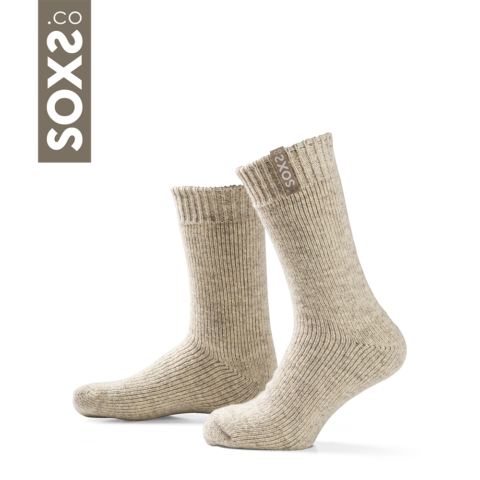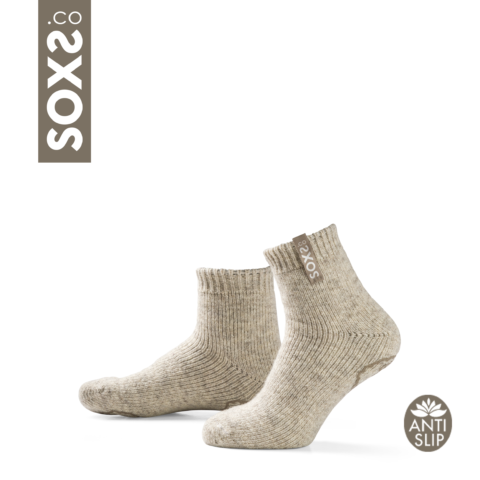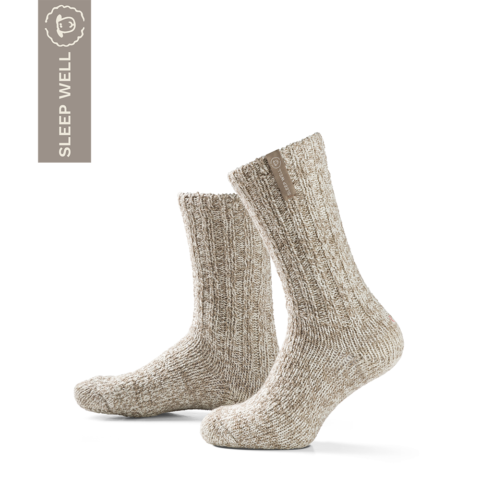Soft warm premium wool socks
Gift ready, stylishly packaged
Orders placed before 1:00 PM will be shipped today (on weekdays) PLEASE NOTE: The delivery time of Pimp My Soxs is 5 working days!
Cold toes on a winter morning can make your day uncomfortable from the start. When temperatures drop to -20°C, the right socks become essential for maintaining warm, comfortable feet. Our wool socks are designed to provide reliable warmth during the coldest conditions, whether you’re enjoying outdoor activities or simply navigating daily life in winter weather. Understanding how quality wool socks work can transform your cold-weather experience.
Cold-weather socks are specifically crafted to provide exceptional insulation while maintaining breathability. They create a protective layer that keeps your feet warm without overheating them. These specialized wool socks trap body heat close to your skin while still allowing moisture to escape, preventing the uncomfortable dampness that can make feet feel colder.
Your comfort in freezing temperatures often depends on having the right foundation. Quality wool socks provide this essential base layer for winter hiking, skiing, or even just walking to work on frosty mornings.
The effectiveness of our extreme cold socks comes from their thoughtful materials and construction. We use high-quality organic wool that naturally excels at temperature regulation. Wool fibers create small air pockets that trap warmth while simultaneously wicking moisture away from your skin, keeping your feet dry and comfortable.
Our eco-friendly socks feature specialized knitting techniques that enhance thermal retention without excessive bulk. The natural properties of wool work with these design elements to maintain a comfortable temperature around your feet even in bitter cold. This combination of breathability and insulation makes wool socks particularly valuable for winter activities.
Finding the right socks for temperatures as low as -20°C involves several practical considerations. Material quality matters significantly—our organic wool socks provide superior warmth and sustainability. The thickness should match both the temperature and your footwear, providing insulation without compromising fit.
Proper fit is crucial for maintaining warmth. Socks that fit too tightly restrict blood circulation, while overly loose socks can bunch up and cause discomfort. Our wool socks are designed to provide a supportive fit that maintains proper circulation. Consider your specific activities too—we offer outdoor wool socks for walking or running, and specialized yoga socks with enhanced grip for indoor practice.
Sustainable wool socks prove their value in numerous real-world situations. During winter sports, they keep your feet comfortable throughout long days of activity. Their natural moisture management prevents the chill that comes from sweaty feet, making them ideal for skiing, snowboarding, or hiking in cold conditions.
Beyond sports, our wool socks provide everyday comfort in cold climates. They make thoughtful gifts for anyone who values warmth and quality. Our collection includes options for the whole family, from warm baby socks to wool socks for kids and adults, ensuring everyone can enjoy the natural benefits of wool.
While wool socks excel in cold conditions, finding the right balance of warmth and comfort can present challenges. Some winter socks can feel bulky in certain footwear. Our outdoor wool socks are designed with this in mind, offering warmth without excessive thickness that might compromise fit in your shoes.
Maintaining position during activity is another important factor. Our socks include supportive elements that help them stay in place during movement. For those concerned about bulk but needing serious warmth, layering thinner wool socks can provide excellent insulation without the extra volume of a single thick pair.
When exploring ways to keep your feet warm, you’ll find various alternatives including heated insoles and electric socks. While these options provide active heating, they depend on batteries and often lack the breathability that natural fibers offer.
Our wool socks provide consistent, reliable warmth without requiring power sources or special care during activities. The natural temperature regulation of wool adjusts to your body’s needs, warming when necessary without causing overheating. This self-regulating quality makes wool socks particularly valuable for extended outdoor activities in changing conditions.
Proper maintenance ensures your wool socks remain effective and comfortable for many winters. We recommend hand washing or using a gentle wool cycle with a wool detergent at temperatures no higher than 30°C. Air drying helps maintain the natural elasticity and insulating properties of the wool fibers.
Store your clean, dry socks in a cool place away from direct sunlight. With these simple care practices, your sustainable wool socks will continue providing warmth and comfort through multiple winter seasons.
For particularly harsh conditions, consider implementing layering techniques with your wool socks. A thin liner sock underneath your main wool sock can create additional insulation while improving moisture management. This combination works especially well for extended outdoor activities in extremely cold weather.
Pairing quality wool socks with appropriate footwear maximizes their effectiveness. Waterproof boots with adequate space for your socks will maintain the insulating air layer that keeps your feet warm. These complementary approaches ensure your feet stay comfortable even in the most challenging winter conditions.
Which winter activities would you like to enjoy with the comfort of SOXS wool socks? Discover our complete collection at soxs.co and find the perfect pair for your cold-weather needs.

Calf height

Ankle height

Calf height